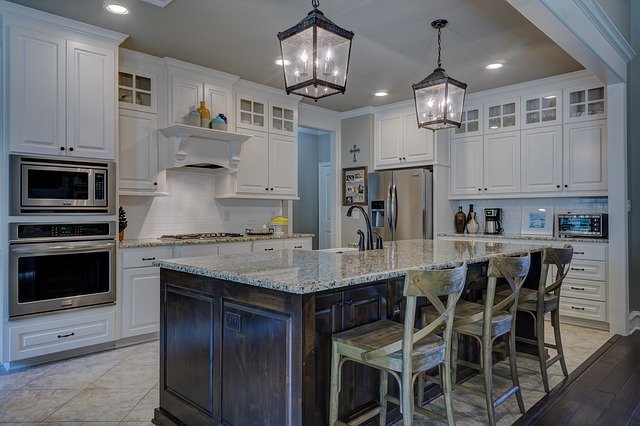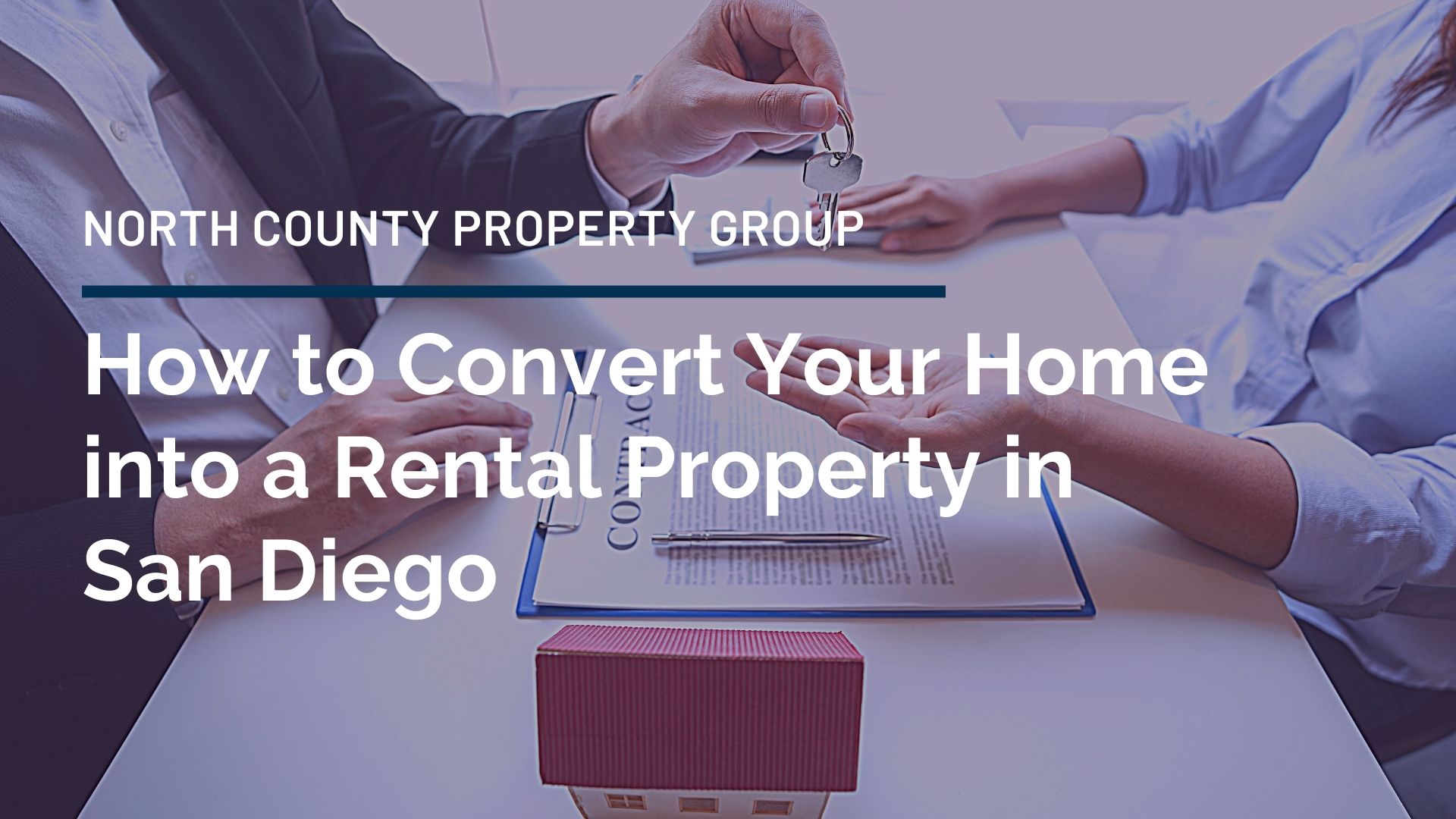Thinking about converting your San Diego home into a rental property? Well, you’ve come to the right place!
There are numerous elements to keep in mind when you’re ready to make the leap into the rental ownership business. It takes a great deal of research to know what to do to give your property a running start on the rental market. Something as small as using smart devices can make a huge difference in the long run.
Luckily, we here at North County Property Group have your back! We’ve compiled a list of key elements to consider to make your rental home a success:
1. Make Your Property Rent-Ready
It can often come as a surprise that, while your property may seem acceptable to you, it might not be for the tenant! One of the most important tasks in converting a home into a rental property is making sure it’s in the proper condition for renters. For example, a leaky faucet may not bother you, but it may nag a tenant. As an extreme, you have something like faulty wiring, and you could quickly find yourself in legal turmoil over safety concerns.
A rent-ready property means it will show well and be most appealing for tenants. If you market a property that isn’t rent-ready, it may lose momentum on the rental market and sit vacant for longer. To avoid this, items may need to be repaired or cleaned, or improvements like new paint, carpeting, and appliances can be implemented.

North County Property Group owns its own maintenance company, MaintenanceSync, that can make your property rent-ready. We can handle all the necessary improvements to boost your market appeal. The details will all be handled for you so you won’t have to worry about a thing!
2. Consider Using Smart Devices
Smart home devices are a big plus, adding value to your rental and increasing tenant happiness. Things like thermostats, security cameras, doorbells, and lighting can all be smart devices. They can help attract residents who may feel more secure with these features, potentially paying even more in rent for them. It also eliminates key management hassles for landlords by having electronic access from a distance.
Additionally, smart devices can reduce home energy and maintenance costs or monitor temperature control and water usage. For example, it could provide alerts for water leaks and help you avoid costly repair bills.
Smart devices can, however, also be more pricy. Home security systems can be $80-500, depending on the features you want to install. Renters may also feel like they’re being watched by property owners or property managers, or you may discover you don’t approve of their lifestyle and run into conflicts.

Ultimately, it’s up to you to weigh the pros and cons of smart device features in your rental. Every property owner has their personal preference!
3. Budget for Maintenance
Remember, maintenance costs don’t end once you find a tenant. If you’re converting your home into a rental property, you need to have maintenance budgets in mind. In general, you can use one of the following rules as a guide:
The 1% Rule: this popular rule states that 1% of your property’s purchase price should be set aside each year for maintenance and repair costs
The Square-Foot Rule: budget $1 per square foot of your rental property each year, but keep in mind that regions vary in cost when it comes to building materials and contractors
Rent Rate Reserves Rule: 10-15% of owner distributions received should be saved for maintenance and repairs
The Blended Approach: set aside the average of each of the above rules per month
With our own maintenance company and an approved vendors and subcontractors list, North County Property Group has you covered when it comes to property maintenance. With our oversight and coordination, we can make the rental experience much easier for property owners.
4. Get Insurance Coverage
Before placing a tenant and starting on your journey as a rental property owner, you need to get insurance coverage. With long-term rentals (generally unfurnished, year-long leases), there are two kinds of insurance policies you must have:
A “Rental Dwelling” Policy: this is a minimum of $1,000,000 public and premises liability insurance. It costs less than homeowners policies due to the lack of personal belongings, covers lost rent during the rebuilding should the property become uninhabitable, and is required by property managers who will likely be insured as well on the policy (a standard procedure)

Renter’s Insurance: this is obtained by the tenant in order to provide tenant liability coverage and insure their personal belongings. For landlords, it protects against tenant incidents and covers their housing should it become unlivable during rebuilds. This insurance policy differs depending on if the property is furnished and if it’s short-term or long-term. It’s worth noting that the traditional form of renter’s insurance is not practical for short-term/vacation rentals
5. Establish a Rental Rate
As we mentioned in our Property Management Brainstorm podcast, the rental rate is one of the most important things when considering renting out your property. While you may have an idea of the price you want, the market ultimately decides the rental rate. But what is the market rate?
Like the stock market, it fluctuates. This is based on factors like supply and demand, location, amenities, and seasonality. For example, in San Diego, holiday season and mid-summer are the slowest to rent as people don’t want the stress of moving at these times.
To get an exact number, market comparatives (comps) are used. This is an analysis of other similar properties close to you that are on the market or are recently rented. Keep in mind that Zillow offers an estimate that’s also available to prospective tenants. If you price it too high, they’ll know, and your property will be sitting vacant.
With North County Property Group, we collaborate with owners and consider the market to get the best rental rate. With the fluctuations of the rental market, adjustments are to be expected. We know in the first week if the rent rate is ideal depending on the responses we get. If there are too few inquiries within 10 days, we implement a 3-5% reduction. In 10 more, another 3-5%. After 30 days, 4-5%. We’ve had a huge amount of success with this strategy!
Bottom Line
When it comes to converting your San Diego home into a rental property, there’s a ton of factors that must be considered. From getting your property rent-ready to maintenance budgeting to finding a rental rate, it can be a daunting task for those just stepping into the rental industry.
Consider hiring the professional services of a property management company like North County Property Group. We can cover all the above tasks for you as well as many other aspects like property marketing, tenant screening or even buying a rental property. It takes years of experience to know exactly how to make a rental home a success, and we can help get you there without all the trouble!
Contact us today and we’d be happy to speak to you about any of your property management needs.











